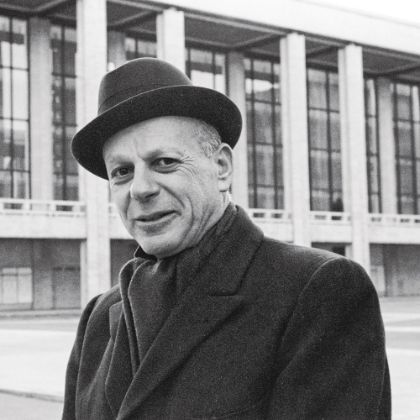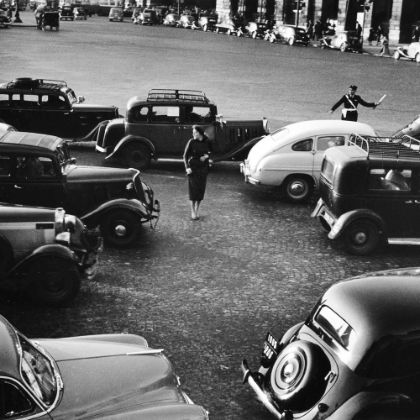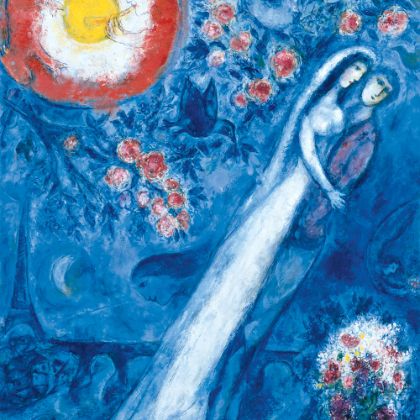What makes a best seller?
Our man looks to land bylines better than this one — with the help of James Patterson.
By Damian Fowler
Every week I scour the New York Times Best Seller lists — both fiction and non-fiction — to see if I can spot a trend, some formula that illuminates the secret of these authors’ success. What are people reading and why? Is there a common denominator? I know I’m not the only one doing this. There’s a multimillion-dollar industry of agents, publishers, book scouts, and movie companies, all looking for this magic bullet. Take a recent list, “Combined Print and E-Book Fiction” for the week ending August 2: books on the list include a handful of crime thrillers, including Girl on a Train by Paula Hawkins, The Good Girl by Mary Kubica, Speaking in Bones by Kathy Reichs, Luckiest Girl Alive by Jessica Knoll, and Dark Places by Gillian Flynn, whose smash-hit thriller Gone Girl precipitated this trend. All of these books have strong female characters in the central roles, and were all written by women. Also on the list is E. L. James’ lit-smut series, which continues apace with Grey, the “shy British mum” having sold over one hundred million books worldwide. And what about literary fiction? Anthony Doerr’s All the Light We Cannot See continues to sell after forty-five weeks on the list, no doubt helped by the fact the author won the 2015 Pulitzer Prize for fiction. But most of the books are clearly genre fiction: right now, if you want a bestselling novel, it’s a good idea to bump off a character ASAP.
Of course, a New York Times Best Seller list wouldn’t be complete without at least one book by the hugely successful writer James Patterson. In this particular week, two of his latest are in the top twenty: Truth or Die and Zoo (now a TV series on CBS). Patterson, who has sold more than three hundred million books, is an unstoppable force in American commercial fiction and remains busier than ever. He has a twenty-four–book contract with his publisher (Little, Brown, and Company) and, at this point, works with a variety of co-authors to keep up his furious pace. Patterson famously admitted that he looks at publishing books “the way Henry Ford would look at it.” Purists may sneer at this production-line mentality, but as I soon learned, that doesn’t mean it’s easy.
It wasn’t long before my curiosity about best sellers tipped off the omniscient god of the internet, and I soon started receiving ads for an online series called Masterclass, taught by none other than James Patterson. There are others in the series for different skills: Dustin Hoffman for acting, Serena Williams for tennis, Usher for stage performance, and Annie Leibovitz for photography. I signed up for the Patterson class to see if the “best-selling author in the world” could teach me the tricks of the trade and get me out of publishing purgatory. Have you seen Patterson’s winter home in Palm Beach?
Over the course of twenty-two bite-size lessons, each about ten minutes, Patterson offers genial insights into the craft of writing a genre work of fiction. Perhaps the most striking thing about his approach is the lack of angst. He’s hardly the tortured artist tearing his hair out over the mot juste. “I’m very efficient,” he declares with a disarming candor. “I’ll take a lot of the time-wasting out of the process.” I like this concept, which appeals to the journalist side of me — as opposed to the romantic, daffodil-loving poet side. He talks about raw ideas: how to build a character and a scene; how to create conflict and fold in surprises. All good practical advice. He talks about passion and habit, the importance of loving what you do, with words of wisdom offered to him by his father: “When you go over the mountain to work, you’ve got to be singing.” Nor does he tiptoe around the question of commercial writing. After all, that’s why we’re here, isn’t it? “If you want to make money, it’s useful to have an idea, a hook, so that when you tell people that idea they say, ‘Tell me more.’ And it’s good to get that reaction from a few people. Go to your nastiest friends.”
‘Everything you do, the name of the game is the artist has to gain.’
—Monica Fitzgibbons
And then there’s Patterson’s secret weapon: creating an outline for the novel. Everything should be in the outline, he says. Students can download the Patterson outline for his 2005 thriller, Honeymoon, about a black widow killer who is tracked by an FBI agent when the men in her life start dropping like flies. The twenty-seven–page outline reads like a story treatment for a movie, with punchy scenes sketched in for the proposed eighty-four chapters. (Patterson writes very short chapters to drive the narrative forward.) There’s no denying that he’s is a master of plot, and thinks about the whole arc of the story. But, wow, is this some cheesy stuff: “Nora and Jeffrey make a fantastic couple — it’s a great relationship from the look of things. Après sex, Nora cooks Jeffrey a big juicy burger in her bra and panties. They talk wedding dates.”
If nothing else, the masterclass reveals rigorous organization behind Patterson’s success. He also clearly knows his audience. Further, he isn’t hung up about being an artist for the ages. He wants to make money. And therein lies the rub, especially if you want money and artistic respect. Honeymoon had sky-high sales, but let’s face it: it’s disposable. A characteristic review on Goodreads is “One of the worst books I have ever read.” Having also read it, I tend to agree. And yet, I tore through it eager to find out what was going to happen. Should I come to the conclusion that most bestsellers are schlock?
Classical best sellers. Traditional classical music tends to be eclipsed on the classical charts by crossover albums and records marketed as “mood music.”
A similar crowd-pleasing genre theme holds true for the music charts, whose figures are provided by Nielsen SoundScan, the music industry’s leading data information provider. (Nielsen BookScan only started to track book sales in 2001.) SoundScan breaks the classical charts into five categories: Classical Albums (overall sales), Classical Catalog, Budget/Midline, Crossover, and Traditional Albums. In the overall sales, number one is Shatter Me by the American violinist Lindsey Sterling, who came to prominence thanks to her music videos on YouTube and a stint on America’s Got Talent. She’s been described as a hip-hop violinist, mashing up different musical styles over electronic beats. Sure, some of this is (kind of) classical, and she plays a classical instrument, but it certainly stretches the definition of the term. Then there is Under One Sky by The Tenors, a vocal quartet of clean-cut Canadian blokes who sing operatic pop with nary a classical aria in sight — a far cry from the Three Tenors. (The recording of their debut concert in Rome, on the eve of World Cup 1990, became the best selling classical album of all time because, well, everyone knows soccer fans love to sing.) The classical chart also features other YouTube sensations, including The Piano Guys, an American musical group who do piano and cello renditions of popular and classical works, again mashing up pieces — like Faure’s “Pavane” with David Guetta’s “Titanium.” It’s a formula that clearly works; it got them a major record deal with Sony Masterworks and a YouTube channel with nearly four million subscribers. But classical in the traditional sense? Not so much.
If we turn our attention to the Traditional Classical chart, the number one album is Benedicta: Marian Chant from Norcia. This is another release by De Montfort Music, a record label that produced and promoted several hit albums for the Benedictines of Mary, Queen of Apostles. When it comes to the traditional definition of classical music, this is closer. Does it yield any insights into the classical market? “We have a niche,” says Monica Fitzgibbons, a former music executive at DreamWorks who established De Montfort Music with her husband Kevin. They’ve tapped the market with this kind of spiritual music, which may not meet the vocal standards for the cognoscenti, but does have a broad appeal as what Fitzgibbons calls “mood music.” In its first week of release, Benedicta sold a few thousand copies, and then continued to sell around five hundred per week, which by classical standards means it’s a best seller. This is part of the De Montfort strategy for its artists who generally do not tour, unlike, say, Andrea Bocelli, who does tour and is a constant presence in the classical charts even though he’s derided by the major classical critics.
When fans write to Fitzgibbons, they often comment on the soothing nature of the music — it’s something beautiful after a stressful day, or background during a study period — an affirmation that the musical content does draw the listener in. With her years of experience in the record industry, Fitzgibbons can see the path to success: “Everything you do, the name of the game is the artist has to gain,” she says. But, in her calculation, it has to be really good artistically too. In order to achieve both, one must work with a small group of artists and devote time and energy to building their profiles.
E. L. James is no stranger to gain, though the artistic merit of her work is dubious (“I’ve never read anything so badly written that got published. It made Twilight look like War and Peace,” said Salman Rushdie, who, it must be noted, actually read the book). In 2012, EMI Classics released Fifty Shades of Grey: The Classical Album, which features “classical music personally selected by author E. L. James herself and referenced in her bestselling Fifty Shades book trilogy.” Tracks include Bach’s Keyboard Concerto in D minor (BWV 974); Debussy’s Book I Prelude, “La fille aux cheveux de lin,” played by Moura Lympany; and In paradisum from Fauré’s Requiem, sung by the King’s College Choir. This collection went to the top of the Billboard classical charts. “Why would a Fifty Shades of Grey orchestral greatest hits do as well as it did?” asked Monica Fitzgibbons. Part of the answer: the movie exposed people to more than just heaving flesh. The classical selections surely had an appeal, in a world where the mainstream audience doesn’t hear much in the way of Bach, Debussy or Fauré. Says Fitzgibbons, “If people have a chance to hear it, that’s the first step. The next step is getting people to actually buy it.” Maybe with a few pointers from Patterson and De Montfort Music, the classical charts could see a resurgence in sales. We’ll see yet whether it takes schlock to make a best seller.

related...
-

Master Builder
His compatriots made institutions of their music. William Schuman made institutions.
Read More
By Russell Platt -

Respighi: Beyond Rome
Respighi’s set of variations is cast away for his more
Read More
‘Roman’ repertoire.
By David Hurwitz -

L’amico Fritz
Mascagni delivers beautiful music, libretto be damned.
Read More
By Robert Levine